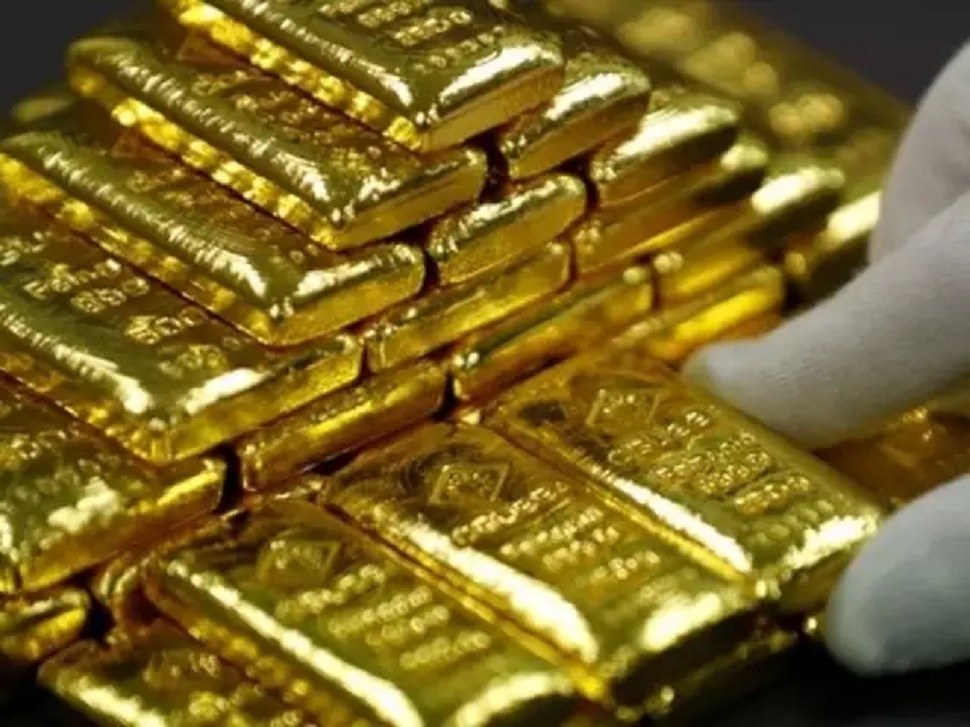Gold Price In For Uptick
| Date :11-Jun-2019 |

By ARJAVI INDRANEESH:
According to Election Commission estimates, the seizure of unaccounted cash, liquor, drugs and precious metals by law enforcement authorities had already crossed Rs. 3,166 crore as of April 25. This is over twice the total seizure value of Rs. 1,200 crore during the 2014 general elections.
THERE is a yet unexplored aspect of the 2019 Lok Sabha elections and that relates to gold purchases during electioneering. Perhaps for the first time, purchases of gold and gold jewellery during the election period were not affected much in spite of the Model Code of Conduct of the election being in force. According to World Gold Council (WGC) accounts, the market remained largely unaffected by the restrictions on cash movement that came into force mid-March.
The code of conduct for elections restricts anyone from carrying cash worth more than Rs. 50,000, unless accompanied by adequate documentation proving the legal source of the cash and the end use of the purchased gold or jewellery. This could mean two things: there has been much less use of black money for gold purchases during the campaign period, thanks to the effective intervention of the Election Commission with the help of the enforcement infrastructure. Generally, election times witness a big spurt in the use of black money for both cash and kind. Gold purchases, by virtue of their high value, are an effective method to beat the system.
This also indicates a certain amount of success by the Government in establishing effective control over the use of black money, a key objective of Modi’s demonetisation move, although the plan failed in most of its other intended objectives. One of the few achievements of the scheme, coupled with GST, has been the inclusion of more economic activities under the tax regime. According to Election Commission estimates, the seizure of unaccounted cash, liquor, drugs and precious metals by law enforcement authorities had already crossed Rs. 3,166 crore as of April 25. This is over twice the total seizure value of Rs. 1,200 crore during the 2014 general elections. Of the total seizures, cash amounted to Rs. 750 crore, liquor worth Rs. 240 crore, drugs worth Rs. 1,183 crore and precious metal seized amounted to Rs. 944 crore, which means gold continued to play an important role in funding election expenses through unauthorised means.
The value of the seizures was the highest in Tamil Nadu, accounting for over Rs. 935 crore in cash and other prohibited items, followed by Gujarat with Rs. 545 crore and the National Capital Territory of Delhi with Rs. 395 crore. Seizures in Punjab were worth Rs. 235 crore, for Andhra Pradesh Rs. 219 crore, Uttar Pradesh Rs. 177 crore and Maharashtra Rs. 130 crore. Another take away from the gold demand point of view is that there could be a spike in purchases in the coming months, due to pent up demand that was held in check during the election time.
The World Gold Council, in fact, expects this to act as something of a headwind for demand throughout the coming quarter. The first half of the quarter was subdued due to the month-long inauspicious period up to mid January, which was followed by a sharp rise in the local gold price, hitting Rs. 3,373 per gram by the third week of February. Prices then swiftly retreated, falling to Rs. 3,200 by the first week of March, and consumers took advantage of the correction, rushing to make wedding-related purchases and pushing the local price to a premium.
A higher number of auspicious days that followed also boosted purchases. There were 21 auspicious wedding days in the Hindu calendar during Q1 2019 – three times that of Q1 2018. The council considers this acting as a crucial factor behind the growth in jewellery demand in the country. Another noteworthy trend is the increasing instance of promotional schemes launched by retailers to counter the growing competition from electronics, designer brands and vacations. Most common were campaigns offering discounts on jewellery-making charges, but some retailers also began actively promoting 14c and lightweight jewellery, specifically targeting younger consumers.
The council expects these promotional efforts to boost jewellery demand in the second quarter, further helped by traditional wedding season buying, the Akshaya Tritiya festival on May 7 and higher crop prices than last year. India was the primary driver of growth in the global demand for jewellery, which amounted to 125.4 tonnes worth $22.2 billion, according to the council. This was the highest first quarter demand since 2015. Although demand in the US continued to expand, the pace of growth slowed as the prolonged Government shutdown hit demand in January. The Middle East region saw a modest recovery, although this is largely because demand in Q1 2018 was hit by the introduction of VAT in the UAE and Saudi Arabia. Iran was a notable exception, falling by 10 per cent, according to WGC. India also contributed to an increase in gold purchases by central banks. India, which began purchasing gold again in 2018 after a nine-year hiatus, bought 8.4 tonnes.
RBI gold reserves have now grown for 13 consecutive months, reaching 608.8 tonnes at the end of the first quarter. According to WGC, net buying by central banks reached 145.5t in the first quarter, 68 per cent higher compared to the previous year. This is the highest volume of first quarter net purchases since 2013, which was 179.1t, comfortably exceeding the five-year quarterly average of 129.2t. On a rolling four-quarter basis, demand reached a record high for the council’s data series of 715.7t.